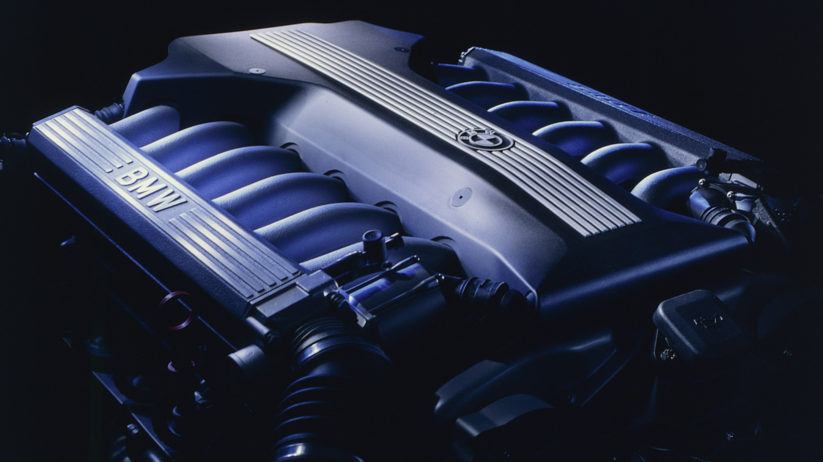With the end of the horizon potentially in sight for the BMW V12 engine—perhaps shortly after the model year 2023—we thought it might be both useful and interesting to recall the history of the V12, which first came to market just over 30 years ago, during the late 1980s. The BMW V12 story isn’t as compelling as that of the V8 or vaunted inline-six, but a lot has changed since the M70 V12 was initially unveiled, and when it comes to the vast range of engine experiences, V12 designs from the world over remain among the most specialized and coveted. Although emissions regulations the world over are contributing to the end of such an excellent engine architecture, at least in terms of non-supercar availability, the stalwart V8 is also to blame.
While V12 development hasn’t advanced much over the past ten to twenty years, the limits of the V8 continue to be pushed, with BMW’s own 4.4-liter N63 and S63 units, along with similar four-liter, hot-vee counterparts from AMG and Audi, seeming to reach new output levels with every generation or model year. On the other hand, while Mercedes has been using the same M279 SOHC twin-turbo, three-valve unit since 2003, BMW’s current direct-injected N74 is also growing rather long in the tooth, having been in production since 2008.
One potential silver lining is that ultra-premium segment competitors, like Ferrari and Lamborghini seem to be committed to V12, at least for near future—and BMW’s own upper echelon, Rolls-Royce, is a chief factor in why the N74 will be sticking around longer than the Mercedes V12 and Audi W12.
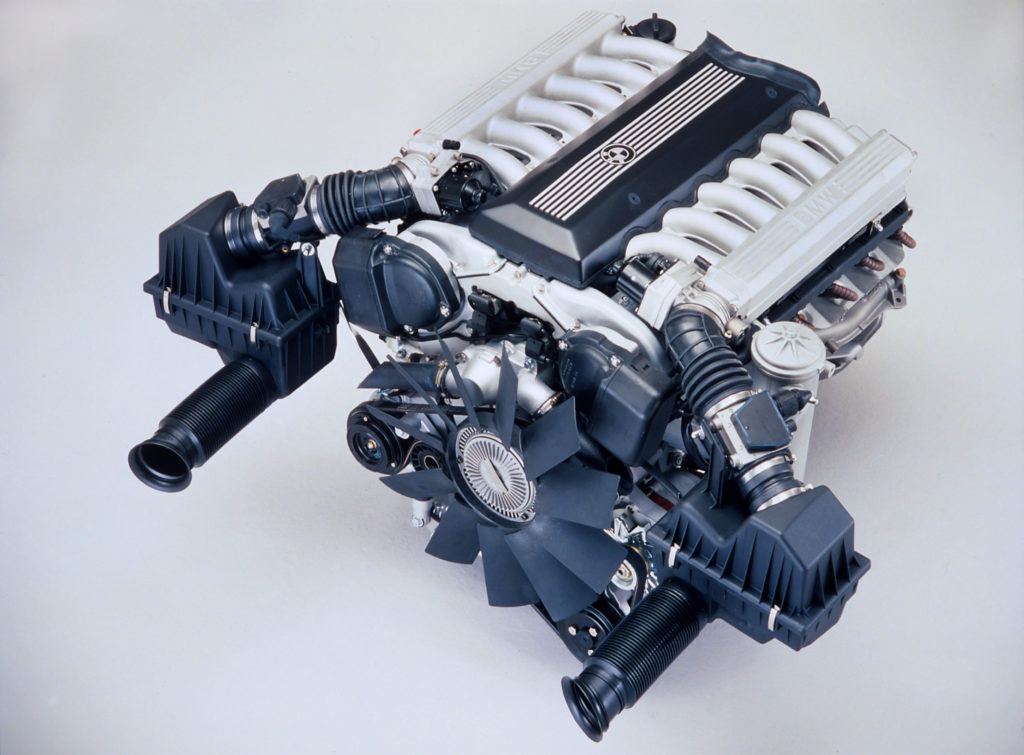
M70 (1987–1996)
The BMW V12 passenger-car lineage begins with the M70, production of which commenced in 1987. Although the M70 came to be as its own unique design, the fundamentals can perhaps best be imagined as a pair of 2.5-liter M20 sixes joined at the crank. BMW’s first V12 employee a rather simple—in retrospect, at least—single-overhead-camshaft cylinder design, with a total of 24 valves between the cylinder banks, which are split at a 60-degree angle.
There are some key differences between the M70 and M20, however, and they include a block constructed of Alusil, more advanced mass-air-flow sensors instead of air-flow meters, and a timing chain rather than a belt. Some other rather important characteristics are the drive-by-wire throttle and hydraulic valve lifters, the latter of which were a factor in BMW initially branding the new twelve-cylinder as maintenance-free.
The M70 is perhaps the most interesting V12 on this breakdown, thanks to the array of different variations that were spawned from the initial design. The five-liter M70B50 was the first version, and arrived for 1988 offering 295 horsepower at 5,300 rpm and 332 pound-feet of torque at 4,100, with a 6,000-rpm redline; 1992 brought the S70B56, a limited-production (1,510, to be exact) run of the 5.6-liter design intended exclusively for the range-topping—and perhaps yet unsurpassed—E31 850CSi that develops 375 horsepower at 5,300 rpm and 406 pound-feet of torque at 4,000.
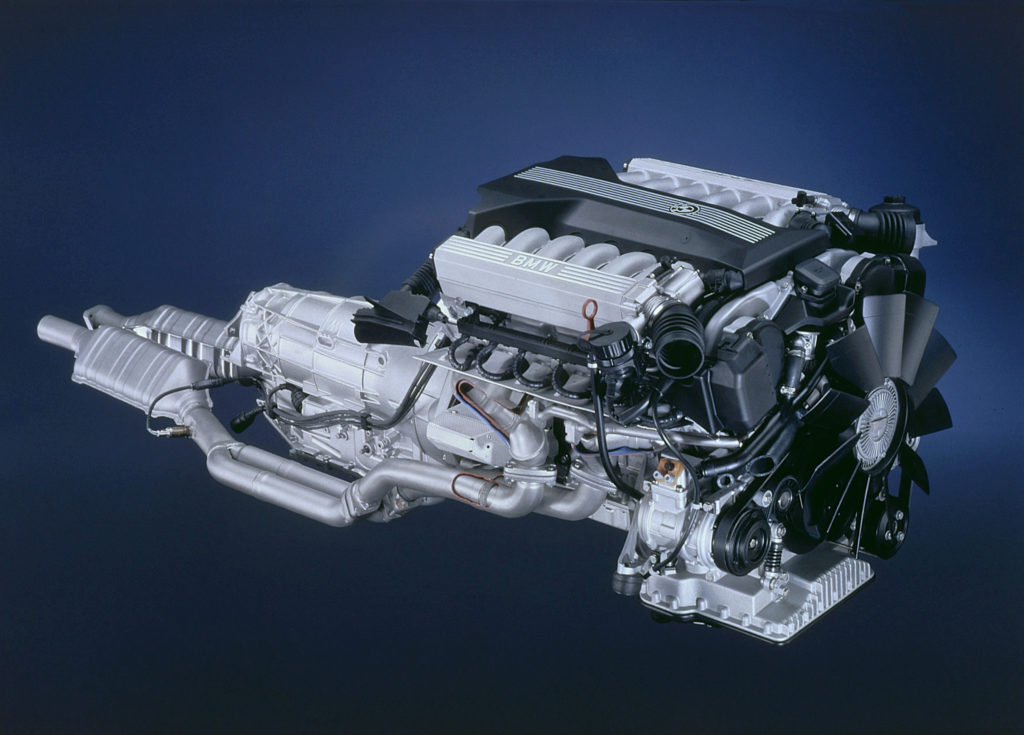
M73 (1993–2002)
The M73, compared to the M70, is a relative footnote in the development lineage, but one that bears mentioning nonetheless. Made from 1993 until 2002, with the last year dedicated to Rolls-Royce, the M73 was produced concurrently with the M70—more specifically the S70B56, which was reserved specifically for the 850CSi. The updated unit brought with it a number of important advancements, however—the sum of which helped move the BMW V12 into the modern era.
Perhaps most obvious, displacement increased from five liters to 5.4, a change achieved by the bore and stroke growing one and four millimeters respectively. The previous SOHC, two-valve cylinder-head design was carried forward, but engine controls advanced, which some using the older-style twin-Bosch ECU setup, and others relying on a single Siemens control unit. The M73TUB54 came in 1998 beneath the hood of the E38 750i, but in 1999, emissions legislation necessitated the addition of more controls, like a heated catalytic converter, water-cooled alternator, and variable thermostat. Output for both the original and updated designs was 322 horsepower at 5,000 rpm with 361 pound-feet of torque at 3,900.
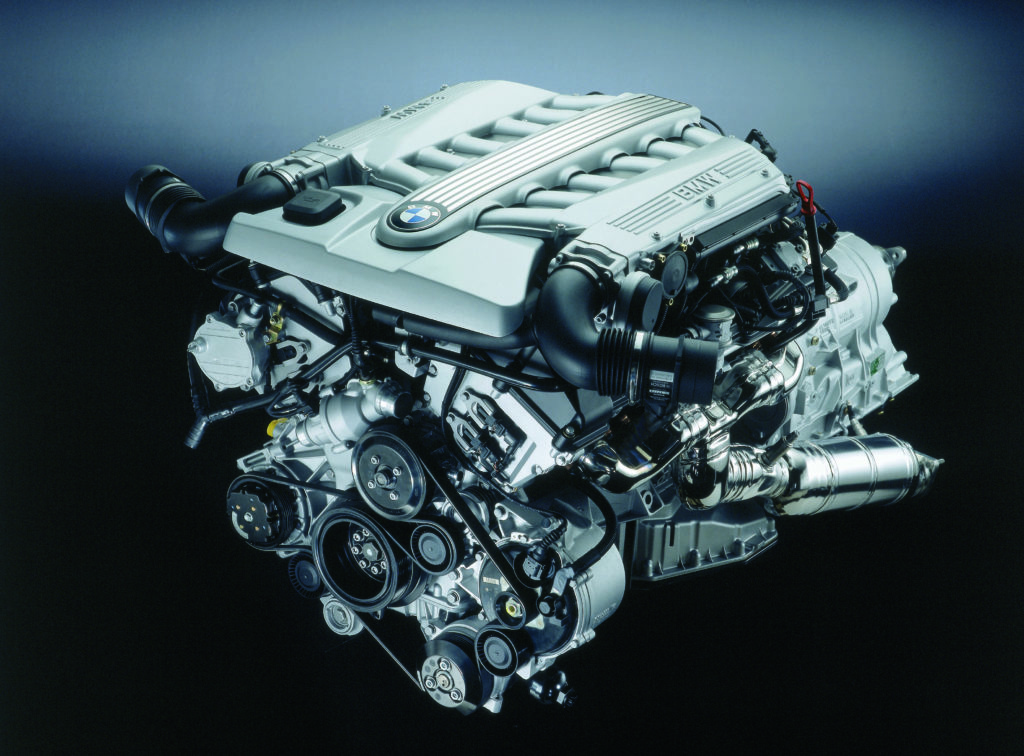
N73 (2003–2016)
Massive technological change accompanied the N73 when it went into production during 2003. The world’s first volume-produced V12 to use direct fuel injection, it also employed new technology that surpassed that of its immediate successor, including double VANOS and Valvetronic intake control, the latter of which is conspicuously absent from the current twin-turbo N74 V12. Displacement for BMW applications is six liters, although the N73B68—actually a 6¾-liter displacement version—was made concurrently for the Rolls-Royce Phantom.
Six-liter versions came with impressive factory ratings of 439 horsepower at 6,000 rpm and 443 pound-feet of torque at 3,950, while the redline is also increased to 6,500 rpm. The 6¾-liter version is substantially more potent, especially when it comes to torque, with 453 horsepower available at 5,350 rpm and 531 pound-feet peaking at 3,500.
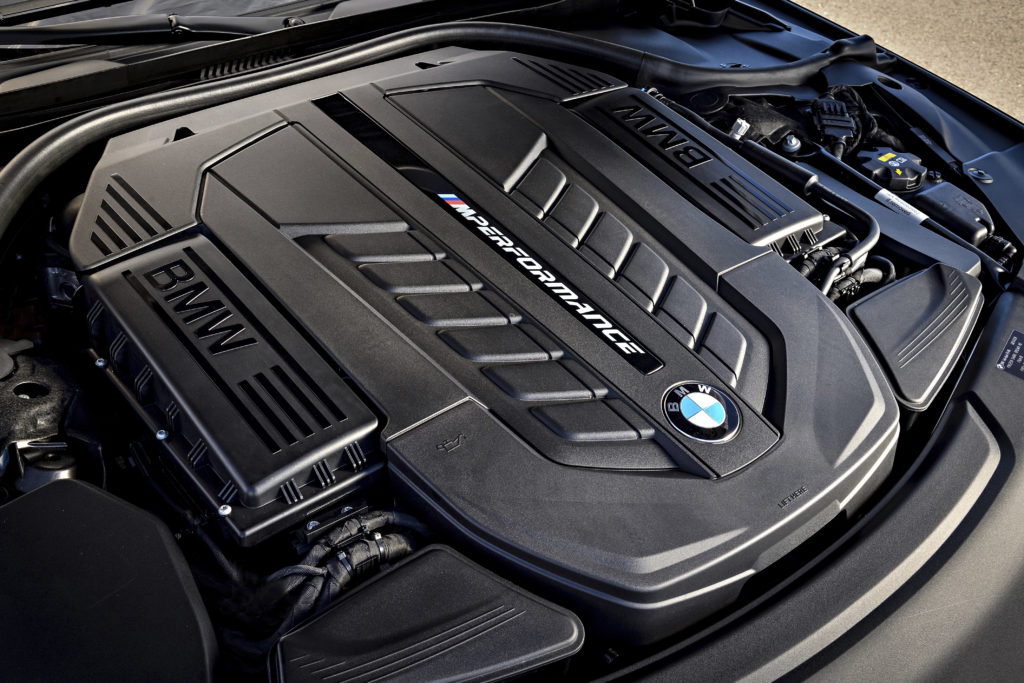
N74 (2008–Present)
All of that brings us to the N74, the current (and perhaps last) BMW passenger-car V12 engine. Produced since 2008 and available from the 2009 model year onward, the N74 represents the pinnacle of output for all BMW engines, although more recently, it’s beginning to be eclipsed by the ever-more-potent S63 V8. There are four distinct versions of the N74, all with varying displacement but largely identical technology.
Compared with the predecessor N73, the N74 uses the same direct-injected DOHC VANOS design, but eschews Valvetronic (BMW branding for variable valve lift) in favor of twin turbos mounted outside of the V-shape formed by the cylinder banks. More important, the N74 was also the first BMW engine to be mated to the eight-speed ZF automatic transmission, versions of which remain in widespread use today.
The initial and most common version of the N74, the six-liter N74B60, which saw use exclusively in the F01 and F02 7 Series, offers 536 horsepower at 5,250 rpm and 553 pound-feet of torque from 1,500 until 5,000, and redlines at 7,000. Next up is the 6.6-liter N74B66, which was exclusively reserved for Rolls-Royce model applications; output for this unit ranges between 563, 593, and 624 horsepower at 5,250 or 5,600 rpm, with either 575, 590, or 620 pound-feet of torque available from 1,500 to either 5,00 or 5,500 rpm.
The N74 was updated in 2016 for the new G11 7 Series, more specifically the M760Li xDrive M Performance flagship sedan. This refreshed unit is designated N74B66TU, and puts down a staggering 600 horsepower at 5,500 rpm and 590 pound-feet of torque through a similar rev range as those listed above. These numbers allow the V12 flagship to sprint from zero to 60 in a factory-quoted time of 3.6 seconds—seriously impressive, but it’s just been bested by the 2020 Alpina B7, which is powered by a massaged version of the N63 that allows for a top speed north of 200 mph. The current Seven is in the midst of its LCI right now, however, and quoted figures indicate that torque for the N74B66TU has been increased to 627 pound-feet.
And there is yet another more powerful variant: the N74B68. Like the previous N73B68, displacement is identical at 6,749 cc—or 6¾ litres, as Rolls-Royce prefers to say—and although the power output of 563 horsepower at 5,250 rpm isn’t the highest, its incredible 664 pound-feet of torque bests the rest of the range by a healthy margin. This engine sees current use in the Rolls-Royce Phantom VIII and Cullinan.
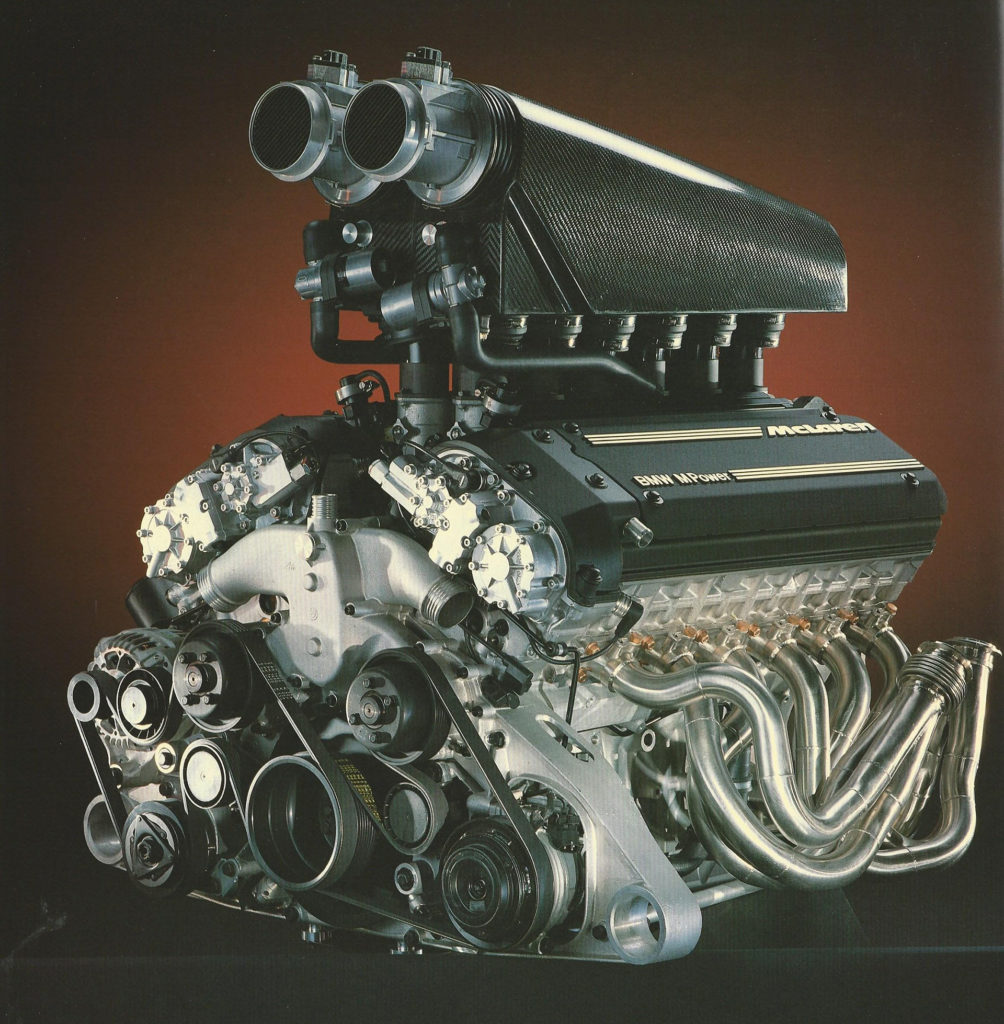
S70/2 (McLaren F1, 1993–1998)
We would be remiss if we failed to mention the most famous BMW V12 of them all, the S70/2 used to power the McLaren F1. Perhaps the most specialized engine BMW has ever manufactured, the S70/2 was left off of our Best BMW Engines lists in favor of other historically significant or otherwise more attainable units that many of us have actual experience with—but the truth of the matter is that the S70/2 deserves a section (or better yet, an entire article) devoted exclusively to it.
Based, albeit loosely, on the M70, S70/2 development was led by the late Paul Rosche, who is credited with other landmark engines such as the M31, S14, and M88. Many of the same fundamental practices that made those engines great—along with concurrent or succeeding designs, like the S50B32 and later S62B50—are present in the McLaren F1’s V12. Developments beyond the regular M70 include a move to a DOHC cylinder design with four valves per, but with double VANOS controlling timing. Both the heads and block are aluminum alloy, with the cylinder bores coated with Nikasil, while select internal components are made from magnesium. (While we’re on the topic of metals, the carbon-fiber body of the McLaren F1 is protected, the engine bay having been lined with reflective gold foil that adds up to weigh sixteen grams.) Along with an ignition coil for each plug, a relatively new advent during the time, each combustion chamber is fed by a pair of fuel injectors, one for low rpm and the other for high, with a seamless transition between the two.
All of this tech amounted to 618 horsepower at 7,400 rpm and 479 pound-feet of torque at 5,600, while redline arrives at 7,500 rpm. Thanks to the S70/2 providing motive force, the McLaren F1 remained the fastest production road car in the world for longer than almost any other competitor. The S70/2 V12 also proved to be a reliable and potent racing power plant, allowing the F1 GTR to win Le Mans in 1995. Another rather important thing to note is that, although faster cars have since displaced the McLaren F1 from the throne, all subsequent successors have relied on forced induction to get the job done, while the McLaren F1’s S70/2 breathes on its own—a true testament to BMW M engineering.—Alex Tock
[Photos courtesy BMW AG.]

